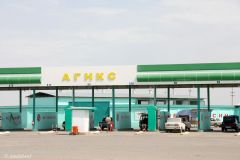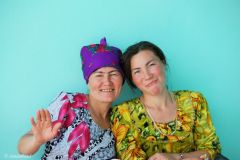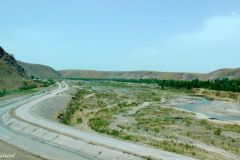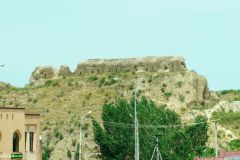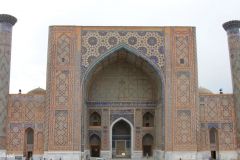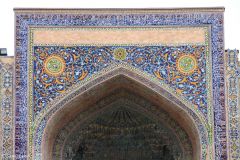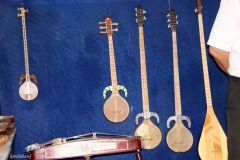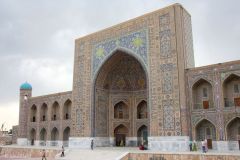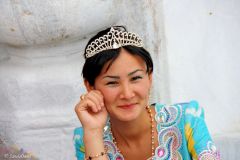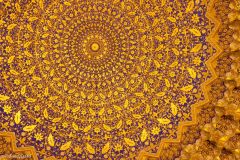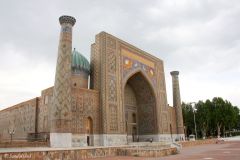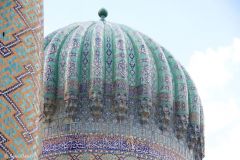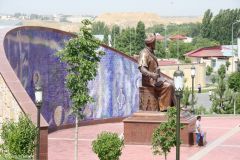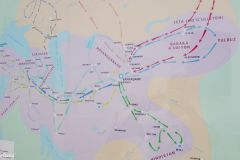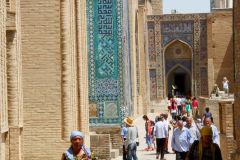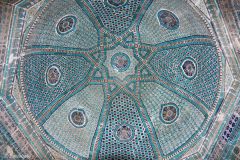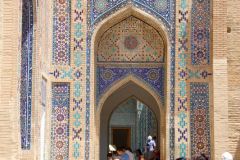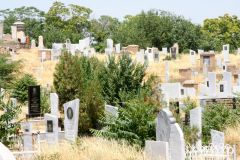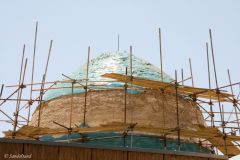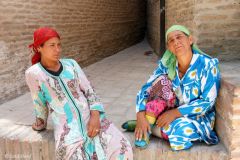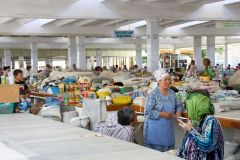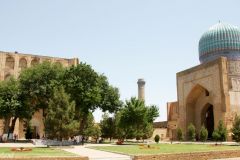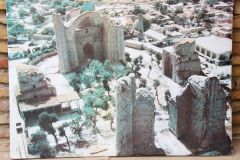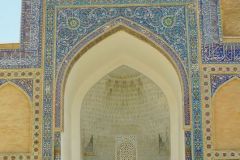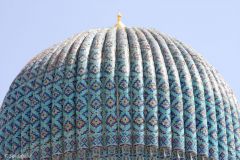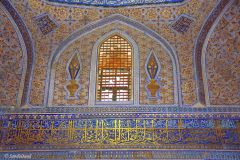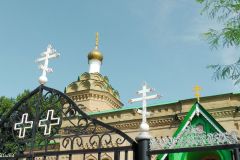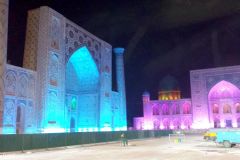Three of history’s greatest warlords found reason to conquer and ravage the city of Samarkand. Time and again the city rose from the ashes to regain its position as the most important and famous city on the ancient Silk Road.
This is part of a series of articles from a journey to the Central Asian republics of Uzbekistan and Kyrgyzstan in June 2014.
Samarkand and the great conquerors
Myths has always been shrouding the history of Samarkand. Marco Polo wrote of a “large and splendid city” in the 13th century. A long time before that, in 329 BC, Alexander the Great, the Macedonian, conquered Samarkand and left much of the city in ruin. Not much of his legacy remains to be seen today.
The next important warlord who was sweeping across Central Asia came from the east. His name was Genghis Khan, the Mongolian who created the world’s largest realm since the Roman Empire. Not even he left much to be seen today.
Genghis came here in 1220 but already in 1370 Timur, or Tamerlame, was building his own empire. This homebrew warrior from this part of the world, contemporary Uzbekistan, went on the create the world’s largest empire. His masterpiece was not rivalled until the British Empire rose under the reign of Queen Victoria in the 19th century.
It was however not these invading kings that set an everlasting mark on Samarkand, it was a religion. Invasions yes, but also a cultural export from the Arab and Persian world turned Central Asia into a Muslim world. This is today the predominant religion and the physical structures are dominated by those dedicated to Islamic studies and worshipping.
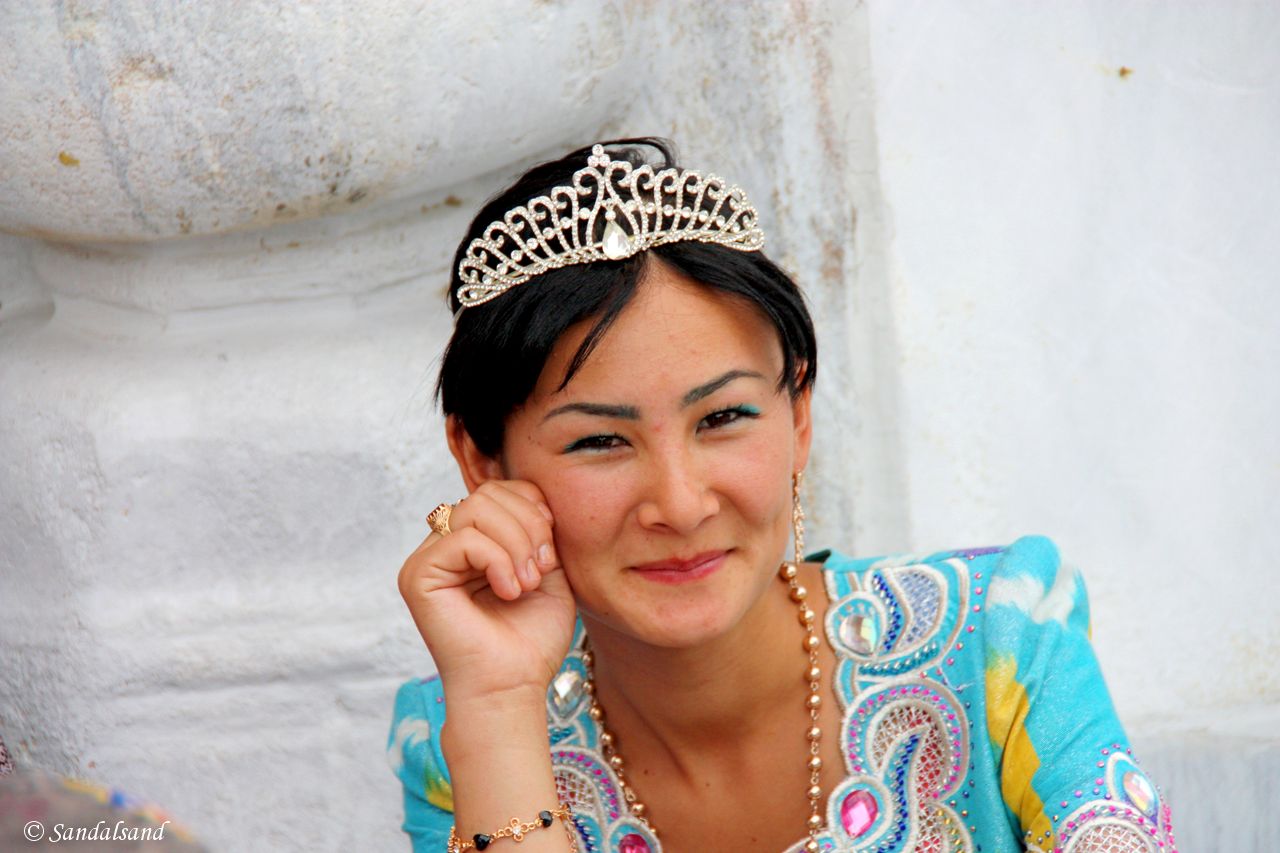
A modern-day Samarkand princess
Samarkand’s eminent position on the Silk Road
There were, as a matter of fact, several Silk roads or routes, but Samarkand was a hub of several of them, and also of the most important routes. Because of the city’s location, Timur the Great made it his capital.
In the following two centuries Samarkand flourished until finally the entire Central Asia succumbed to a new competitor. The sea lanes proved cheaper, faster and less dangerous than the overland routes through Central Asia. The whole region fell into decline and Samarkand was perhaps the first major city to fall asleep.
While on top, Samarkand was not only the master of trade, but also of scientific exploration, religious studies, and cultural mingling.
Today’s visitors will be led to the architectural sights dating back to that period. Before I introduce them, I will start with what happened to us on the way to Samarkand.
Getting there
There are even today many ways of getting to Samarkand, by road or air. Uzbekistan, as the second double landlocked country on Earth will naturally not offer cruise liners to call on the city. Anyway, our day started in Tashkent, the capital of Uzbekistan.
On the way out of the city I noticed a building signposted with Irrigation Institute or perhaps it was university. Coming from fertile, rainy Norway the concept seemed odd but the rest of the day the truth became evident. Uzbekistan is a very dry country. Yet it is was in the days of Soviet Union destined to become the world’s largest cotton producer. Irrigation was the key.
In fact irrigation led to the ecological disaster in the country’s western region, draining the previously huge Aral Sea. Likewise, the country’s development even today is driven by the need to control the rivers flowing through the country for other kind of agricultural purposes.
Sights in Samarkand
Now, what would you expect to see in Samarkand? I will now turn to the sights as we saw them. They are almost all from the days of glory, more than 500 years ago. To preserve it, the UNESCO World Heritage Committee has placed Samarkand on its famous Heritage List.
But I will add that both in the days of the Soviet Union, and in recent years as an independent state, the authorities has been doing a lot to restore and preserve. That goes for the rest of the cultural heritage in Uzbekistan as well. I once asked our guide how much would be original. About 20 percent he replied.
- The Registan
- Gur Emir Mausoleum
- Bibi-Khanym Mosque
- Shah-i-Zinda Necropolis
- Ulugh Beg Observatory
- Central market bazaar
- Alexy Russian Orthodox Church
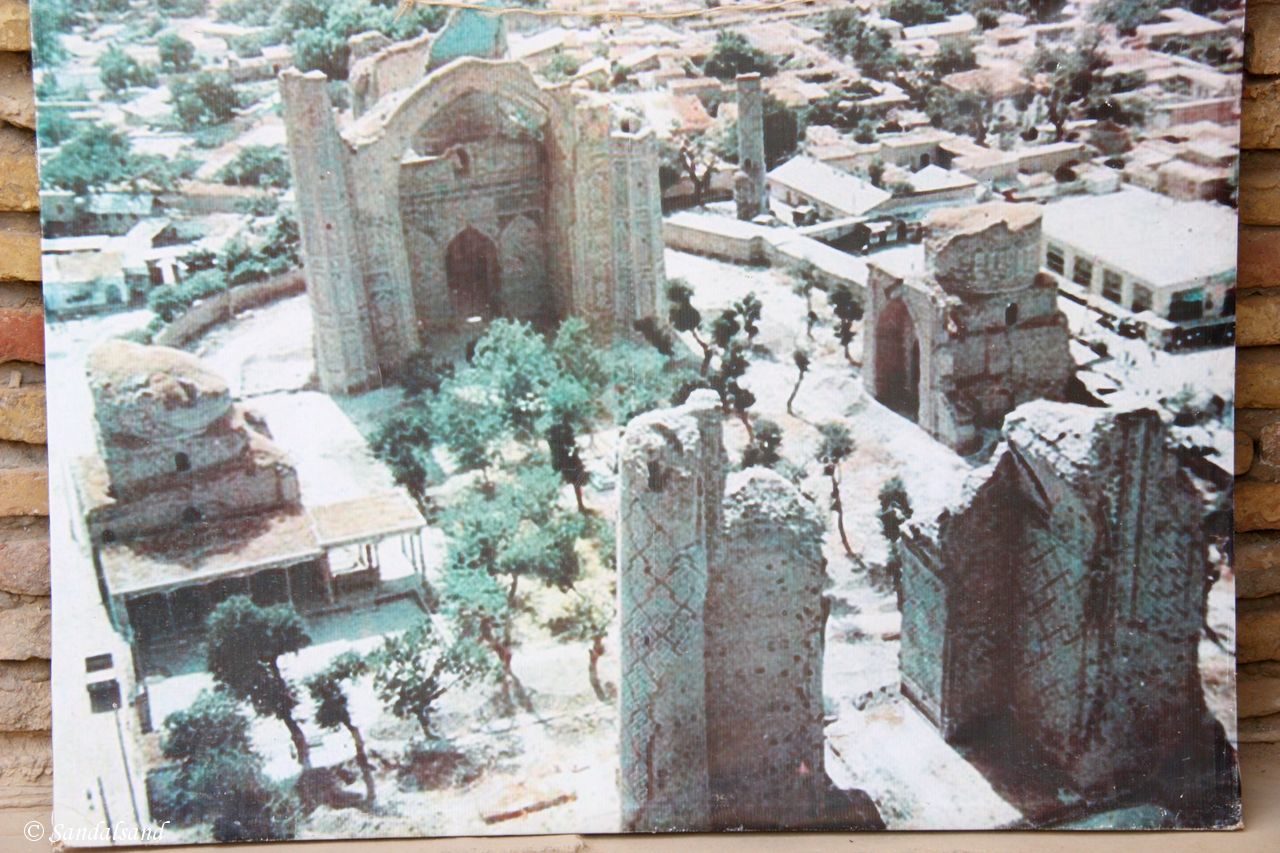
Image of what it used to be like in Samarkand after centuries of decline, deterioration and neglect. Like this. Everything has now changed.
The Registan
This is the biggest sight in Samarkand, and quite possibly on the entire Silk Road. Three huge madrasahs form three ends of a huge square. A madrasah is a school, most notably one that teaches Islam.
The Madrasah of Ulugh Beg was the first to be built, 1417–1420. If you are facing the square from its open end, this building is on the left. To the right is the Sher-Dor Madrasah (Lions Gate) built two hundred years later 1619–1635/36), and right in front is the Tilya-Kori Madrasah (1647–1659/60).
They all represent some of the most valuable and appreciated buildings of Islamic architecture. To the casual visitor, and I regard myself as one, the front portals are the most elaborate. And biggest. The structures behind are much lower and they are all built around a central courtyard.
In the old days market activities would take place on the huge open square between the madrasahs. Today the former study rooms circling the inner courtyards in one or two storeys, are filled with souvenir shops and the like.
In addition we notice the lovely coloured domes and the tall minarets. You will also appreciate the golden interior of the Tilya-Kori Madrasah.
Gur Emir Mausoleum
This quite literally translates as “tomb of a king” and holds the remains of Timur himself, although not built for him in the first place. From the outside it has a quite modest appearance (everything is relative) but the interior carvings and mosaic work are particularly impressive.
Bibi-Khanym Mosque
This is a Friday mosque, meaning that actual prayers took place here. The same features as on the buildings at the Registan are present – a huge portal and a large courtyard behind it.
The mosque at the far end of the courtyard is not very large. There is also a small group of trees inside this courtyard.
Shah-i-Zinda Necropolis
This author is fascinated by cemeteries, small and large, of different religions. There is even a couple of special articles on this website describing the phenomenon of taking care of the dead.
I found Shah-i-Zinda utterly fascinating, for a number of reasons.
First, the “city of the dead” is basically a street going uphill lined with mausoleums. The originals date back to the 9th century, but the group of more than 20 we now meet are from the 11th to the 19th centuries. Most are built almost the same way as the mosques and madrasahs in central Samarkand – with a huge portal and a room inside.
The portals are all lavishly decorated, and so are several of the rooms inside.
At the far end of the street, a dead end so to speak, we find the most beautiful group of all the mausoleums. I have not enough positive adjectives in my vocabulary to describe them, so enjoy the pictures instead.
Second, the necropolis used to be in a very bad condition. What is seen today is not at all like it was a hundred years ago. How much has been pure restoration and how much has been free fantasy, is beyond my knowledge. The fact is though that there was reconstruction activities going on in several of the mausoleums. Piles of tiles were stacked behind the buildings and scaffolds had been set up facilitating the work.
Third, the continuation of the necropolis is into a modern cemetery. This one was fascinating too, with images of the dead on many tombstones.
We are now turning to some attractions of a different nature.
Ulugh Beg Observatory
This observatory was built in the 1420s, destroyed a few years later by religious fanatics (yes, they were around at that time as well) and rediscovered five hundred years after that. They have been able to reconstruct the basic structure of it, as well as put up a museum on a hill and a huge statue of the science-king Ulugh Beg himself at the base of the hill.
What was it?
Well, the Islamic world produced some really great astronomers. Some of them came here to work with Ulugh Beg himself.
The observatory was a large round building three storeys high. At the centre there was a large sextant with a radius of 40m, set into a trench, dug into a hill in the plane of the meridian. The construction was solid, and the size made it very accurate.
Sights of a different kind, and more recent date
As described in the beginning of this article, Samarkand has always been about trade. Set at the historical site of a large market, the Central market bazaar, is vibrant even today. It is large, filled with every kind of produce.
In fact, this is for locals. Not much of the goods were meant to be bought as souvenirs by foreign tourists. In other words, this is worth exploring.
My last attraction in Samarkand may not be an attraction at all, to some. I found the contrast represented by the Alexy Russian Orthodox Church, interesting. Yes, Samarkand and the rest of the country has been under influence of the Russian Orthodox church for at least 140 years, and there are also a certain number of ethnical Russians living here.
The very last thing I would like to mention is food. This is not specific to Samarkand but is more like typical of the practice we met throughout the country. Our lunches and dinners followed this routine: Soup as a starter (usually meat with various vegetables, and very good), meat for a main course accompanied by a number of side-dishes like on the picture below. For dessert there would be a sweet cake of some sort. Tea for drinking, or beer, or vodka in between.
Uzbekistan is a Muslim country, but not that Muslim. Wine is grown, stronger drinks are produced as well, and we had some great tasting in a wine cellar.
The map
On the map below Leg 1 goes from Tashkent (A) west to Khiva (E) in Uzbekistan. Then a flight back to Tashkent (A) before Leg 2 to Bishkek (F) in Kyrgyzstan.
Read more
The chapters:
(1) In search of the ancient Silk Road
(2) The monumentalism of Tashkent
(4) Shakhrisabz and the birth of a nation
(5) The Emir of Bukhara and the lost camels
(6) The magnificent oasis of Khiva
(7) The fertile Fergana Valley
(8) Nomadic life on the mountain passes of Kyrgyzstan
(9) Bishkek and the valley of Ala Archa
In addition the World Heritage Committee has appointed five sites on its list. The following article is my special entry from Samarkand.
WHC List #0603 – Samarkand – Crossroad of Cultures
Images from Samarkand – and from getting there
Click to enlarge and browse.



